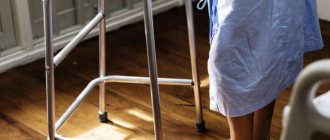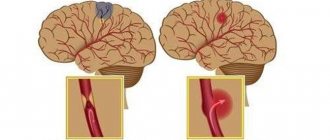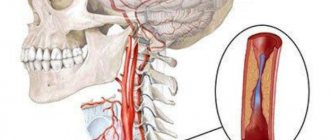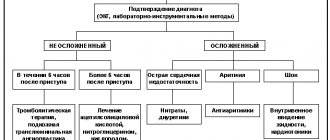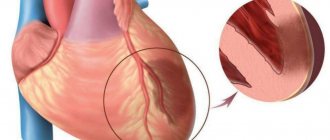Last update: 02/21/2021
Hemorrhagic diathesis is a category of diseases that are in one way or another associated with increased bleeding of the body.
If a person has hemorrhagic diathesis, deviations in the functioning of the hematopoietic system are observed, leading to disruption of the blood clotting process, frequent external, subcutaneous and internal bleeding. The diagnosis of hemorrhagic diathesis and their treatment should be carried out exclusively by a doctor - self-medication is inappropriate here.
Hemorrhagic diathesis: classification
There are two groups of hemorrhagic diathesis, caused by hereditary (primary) and acquired (secondary) deviations from the norm. In the first case, the main role is given to congenital genetic defects (for example, problems with platelet development, as well as abnormalities in plasma clotting factors).
In the second case, the trigger for the development of hemorrhagic diathesis is autoimmune diseases, taking certain medications, damage to the walls of blood vessels by toxins, and so on.
As for the mechanism of development of the disease, the following forms of hemorrhagic diathesis are distinguished:
- Caused by disruptions in the functioning of platelet hemostasis (autoimmune thrombocytopenia, thrombasthenia).
- Caused by a violation of the integrity of blood vessels (hemorrhagic vasculitis, Randu-Osler disease).
- Appeared as a result of a violation of the plasma hemostasis (congenital and acquired coagulopathies).
- Hemorrhagic diathesis caused by combined disorders (von Willebrand disease).
Hemorrhagic diathesis in children
Quite often, hemorrhagic diathesis occurs in childhood. Viral and bacterial infections and medications (sulfonamides, butadione, quinine, dopegit, etc.) contribute to the development of the disease.
However, there are also congenital forms of diathesis, when problems with blood clotting can be caused by heredity.
You cannot let hemorrhagic diathesis take its course, even if you are sure that this is an age-related disorder that will go away over time. It is necessary to undergo a laboratory blood test and carefully monitor the manifestations of this functional abnormality.
Why does the anomaly develop?
Among the causes of diathesis, doctors name a number of hereditary and prenatal factors, environmental features and care for the newborn. Among them:
- complications of pregnancy - toxicosis, infections suffered by the mother during pregnancy, taking certain medications during pregnancy, bad habits and eating disorders, fetal hypoxia;
- unfavorable heredity, the presence of anomalies in close relatives;
- too small or increased body weight of the child at birth;
- perinatal pathologies of the central nervous system;
- artificial feeding;
- dysbacteriosis;
- improper child care, temperature irregularities or poor nutrition;
- vaccination;
- chronic infections;
- emotional distress.
The mechanism of formation of physiological adaptation of a newborn is quite complex and fragile, it is influenced by many factors.
Hemorrhagic diathesis: causes
Most often, problems associated with bleeding are based on abnormalities in the process of blood clotting - the so-called disaggregation forms of thrombocytopathy. A tendency to hemorrhagic diathesis may be due to the presence of diseases such as leukemia, hemorrhagic vasculitis, hemophilia, and so on.
In addition, common causes of hemorrhagic diathesis include the following:
- Taking certain medications (for example, anticoagulants that thin the blood).
- Congenital pathologies of blood vessels and hematopoietic system.
- Violation of the permeability of the walls of blood vessels.
- Vitamin C deficiency.
- Deviations in the functioning of the liver and spleen.
- Some autoimmune, infectious and viral diseases.
- Damage to the vascular system during fever.
Diagnostics
The examination is carried out to determine the etiological factors, the form of the disease and the prevalence of petechial-spotted rashes and bruises. The hematologist draws up a diagnostic plan together with a rheumatologist, traumatologist, infectious disease specialist, gynecologist, and surgeon.
The study includes:
- clinical and biochemical blood tests;
- stool occult blood test;
- Coombs test (determination of anti-erythrocyte antibodies);
- capillary fragility tests;
- determination of antiplatelet antibodies, lupus anticoagulant;
- sternal puncture of bone marrow, trepanobiopsy;
- radiography of joints;
- Ultrasound of the liver and kidneys.
Symptoms of hemorrhagic diathesis
The clinical picture usually looks like this:
- The appearance of reddish-pink rashes on the body and mucous membranes.
- Hematomas of unknown nature.
- Subcutaneous bleeding.
- Ulcers may appear.
- Presence of blood in the urine.
- Abdominal pain, nausea, vomiting.
- Hemorrhage in the joint cavity is also possible.
- Redness of the retina.
- In especially severe cases, hemorrhages into internal organs occur.
As for the types of bleeding with a particular type of hemorrhagic diathesis, we can distinguish:
- Hematoma type. It manifests itself as painful, intense hemorrhages in both soft tissues and joints - typical for hemophilia A and B.
- Microangiomatous type. Most often occurs in the presence of a hereditary hemorrhagic form of diathesis. Manifests itself in the form of frequent recurring bleeding.
- Mixed type. The clinical picture with this type of bleeding is the appearance of a small red rash and extensive hematomas.
- Petechial-spotted (bruised) - characteristic of thrombocytopenia, thrombocytopathies and some bleeding disorders (exceptionally rare) - hypo- and dysfibrinogenemia, hereditary deficiency of factors X and II, sometimes VII;
- The vasculitic purpuric type is characterized by hemorrhages in the form of a symmetrical pinpoint rash, possibly associated with nephritis and intestinal bleeding; observed in infectious and immune vasculitis.
On our website you can find photos of hemorrhagic diathesis that clearly demonstrate the different types of manifestation of this reaction of the body.
Prevention
{banner_banstat9}
Prevention of hemorrhagic syndrome begins in the maternity hospital. Vitamin K is intended to prevent hemorrhages in premature newborns, administered to babies for the purpose of prevention in a minimal dose (1 mg) immediately after birth.
In order to prevent hemophilia in families where cases of the disease have occurred, future parents should visit a geneticist to calculate the risk of having a sick child.
If there is increased bleeding or taking blood-thinning drugs, the patient is obliged to report these circumstances to dentists, surgeons and other specialists whose actions may lead to bleeding.
Hemorrhagic diathesis: treatment
Before starting treatment, it is important to successfully diagnose. This may require the following:
- Conducting general laboratory and biochemical tests of blood and urine.
- Determination of the time required for blood clotting and the duration of bleeding. Carrying out a coagulogram.
- Carrying out immunological, as well as thromboplastin generation, prothrombin and thrombin tests.
After passing these examinations, the doctor can make an accurate diagnosis and prescribe appropriate treatment. It may include taking certain medications (for example, iron supplements, corticosteroids) and vitamin complexes and supplements, as well as more radical methods: for example, joint puncture, transfusion of plasma or red blood cells, or surgical removal of the spleen.
When diagnosing hemorrhagic diathesis, it is important to carry out preventive measures that can strengthen the body and increase its protective functions. These include hardening, moderate physical activity and exercise, a balanced diet with a carefully selected vitamin composition. In addition, it is especially important to protect the body from the possibility of infection with viral diseases in the autumn-spring period. To do this, it is recommended to take specially selected vitamin complexes.
Pharmacy products from La Cree cannot be considered fully medicinal, but they can provide high-quality care for skin damaged by hemorrhagic diathesis. Since La Cree skin products are made from natural ingredients and do not contain dyes, parabens or fragrances, creams and gels of this brand help to delicately cleanse the skin and relieve signs of redness and irritation.
Diet
Diathesis in children responds well to treatment if the recommended diet is followed.
During breastfeeding, the baby's mother should adhere to it. Allergenic foods (sweets, citrus fruits, eggs, honey, etc.) are excluded. During the introduction of complementary foods, in order to avoid the development of diathesis, the baby’s skin reactions to the new product should be monitored, and if signs of illness appear, exclude it for three to five months, until the next attempt. After the introduction of complementary foods, the basis of the menu should be cereals, lean meat and fish, vegetables and fruits. The consumption of sweets and foods high in food additives should be limited as much as possible. Contact us!
Specialists at the PsorMak Skin Diseases Center have been successfully treating diathesis in children for many years. Contact us for an initial consultation, our doctors will help you develop a complete understanding of how to properly treat the disease in the acute stage (with skin rashes). In addition, we will help you create a dietary diet and suggest what other measures to correct the child’s lifestyle should be taken to improve his health and effectively combat the disease. Make an appointment by calling +7 (495) 150-15-14,
Clinical researches
The effectiveness, safety and tolerability of La-Cri products have been clinically proven. The products are recommended by the Union of Pediatricians of Russia; many products can be used in children from birth.
Sources:
- B.A. Shamov, I.G. Safiullina, A.B. Beshimova, T.B. Shamov, Differential diagnosis of atopic dermatitis, journal of Practical Medicine, 2011 https://cyberleninka.ru/article/v/differentsialnaya-diagnostika-atopicheskogo-dermatita
- Fokina R.A., Atopic dermatitis: stages of development of classification forms, Siberian Medical Journal, 2007 https://cyberleninka.ru/article/v/atopicheskiy-dermatit-etapy-razvitiya-klassifikatsionnyh-form
- A.N. Pampura, A.A. Chuslyaeva, Modern approaches to the treatment of atopic dermatitis in children https://cyberleninka.ru/article/v/sovremennye-podhody-k-terapii-atopicheskogo-dermatita-u-detey
Photos of diathesis
Photo album on the disease
